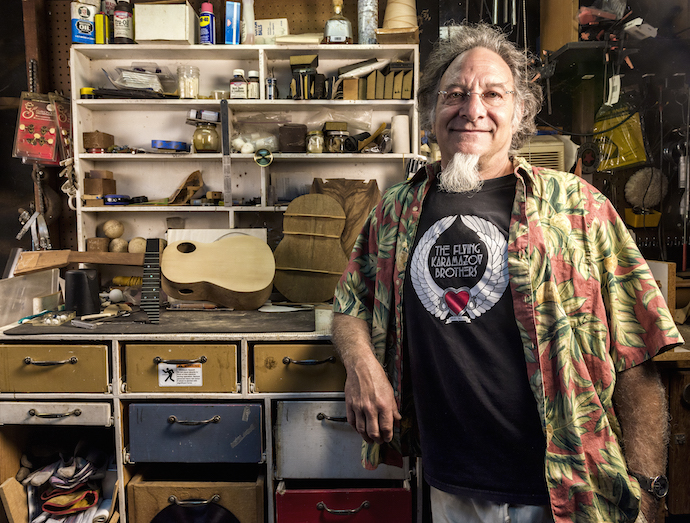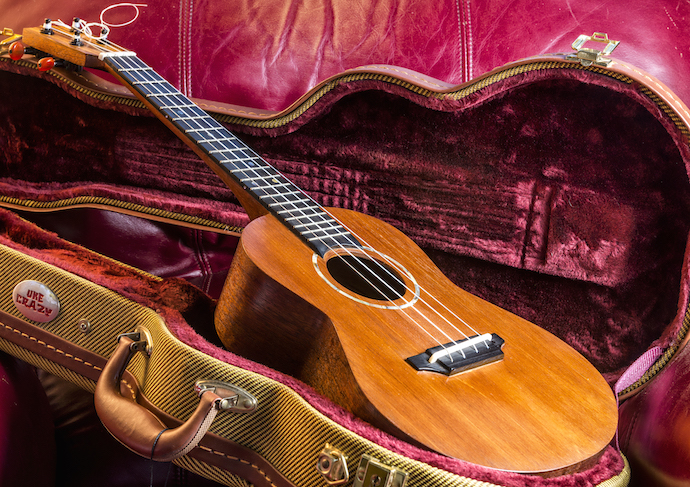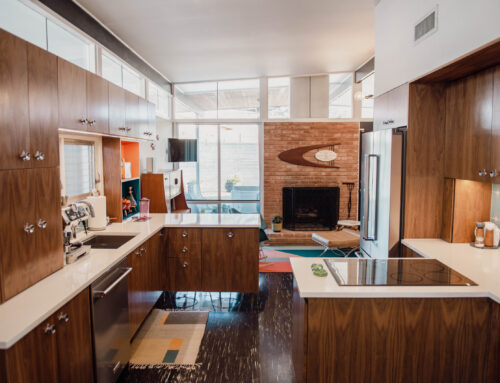
Photo by: Danny Fulgencio
Uking it out
Story by Patti Vinson
A ukulele’s strum can evoke feelings of tropical vacations and kitschy nostalgia — think, the “Arthur Godfrey Show” or “Laugh In.”
Tiny Tim and his “Tiptoe Through the Tulips” nearly ruined it, before Jake Shimabukuro breathed new life into the Hawaiian hit-maker.
Today this humble little instrument, a small, four-string version of the guitar, is booming in popularity. Just ask neighbor Logan Daffron, crafter of custom ukuleles.
His preexisting passion, photography, led to juggling, which led him up the ukulele-producing path.
It seems a stretch, but back in the early 1980s, Daffron was mostly photographing weddings. That’s when he heard about a gig for jugglers at a Greco-Roman faire in East Texas. Though he had limited experience, he made it through the faire with a little instruction from a friend.
He was a natural.
An agent quickly agreed to represent him, after which Daffron worked full-time tossing pins and other items into the air.
The prodigious performer opened for the likes of Leon Redbone and Melissa Etheridge, and taught classes. Members of the Dallas Cowboys sought out his expertise, aiming to improve their hand-eye coordination skills.
In 2000 or so, Daffron was teaching his tricks to a class at Half Price Books; a ukulele group happened to be meeting at the same time.
“I already played guitar, so the fingering and chord shapes were familiar. They had an extra uke for me to play, and after a couple of weeks, I bought my own.”
Daffron points to ukulele artist Jake Shimabukuro’s viral video — a crazy good rendition of George Harrison’s “While My Guitar Gently Weeps” — as a turning point for the instrument. “The ghost of Tiny Tim’s influence on the uke had passed and it was becoming cool to play one again. Four fingers and four strings make an easy, happy, fun sound. I was hooked.”
When a two-week intensive ukulele- building course in Hawaii landed in his lap, Daffron jumped at the chance. “I had always wanted to build an acoustic guitar, but there was nowhere to learn,” he laughs. “It seemed like a good reason to go to Hawaii without having to get married.”
He returned home with his own creation: a beautiful ukulele made of mahogany with an ebony soundboard, abalone inlay and zebra wood headstock. “It was so much fun building my first uke I decided to keep doing it when I got home.”
Daffron set up shop in the garage of his White Rock-area home and went to work building instruments for friends and, as word spread, beyond. Among his customers is singer-songwriter and Dallas native Edie Brickell, who tours with the New Bohemians and collaborates with actor/musician Steve Martin on Americana music.
Daffron met Brickell when she performed frequently at a bar he once owned. He saw her again at Club Dada, and eventually he found himself backstage there with Brickell’s famous husband, singer-songwriter Paul Simon — also, as fate would have it, a juggler. Simon admired Daffron’s ukulele. Daffron soon was at work in his shop, cutting out koa wood for Brickell’s ukelele first (of many) ukuleles.
Last April, he hand-delivered her latest handcrafted instrument order back stage after a concert she headlined in Oak Cliff.

Photo by: Danny Fulgencio
“The ukulele is a simple instrument, but it can be complex [to build]. It’s like a person: It has a head, a neck and a body.” He laughs, “It’s not like Frankenstein. All the pieces are individually and happily made and cobbled together.”
Using his own template, Daffron cuts out the soundboard, the facade, from select wood, maybe golden mango or Hawaiian koa or mahogany.
“It’s the most important part; it’s where sound is made. Vibration makes the sound, not the strings.” He adds, “The wood has to be firm and strong but still vibrate.”
He uses a side-bending machine which basically uses steam to create the instrument’s signature curves.
Bracing, attaching the soundboard and back, creating a box, cutting and trimming — he rattles off complexities.
“I make a lot of sawdust, but it starts to look like a ukulele after a while.”
Painstakingly, he shapes the neck, heelstock and headstock — applies a fret board, tuners and the bridge.
“Then I string it up.” Voila: Ukulele.
He personalized instruments, fashioning the letter “K” into the headstock in one; in another, he spelled out the recipient’s name in wooden letters positioning it so was only visible through the sound hole.
While the finished product is beautiful, that’s not the point. “In the end, you just want it to play well and sound great.”
Daffron calls it a “labor of love. It’s not a money-making venture for me.” His advice for uke-building wannabes: “You need a lot of patience and time.”
The best thing about building ukuleles? “Playing them once you finish,” grins Daffron.
Then he picks up his first-born uke and strums the Beatles’ “Yellow Submarine.”





